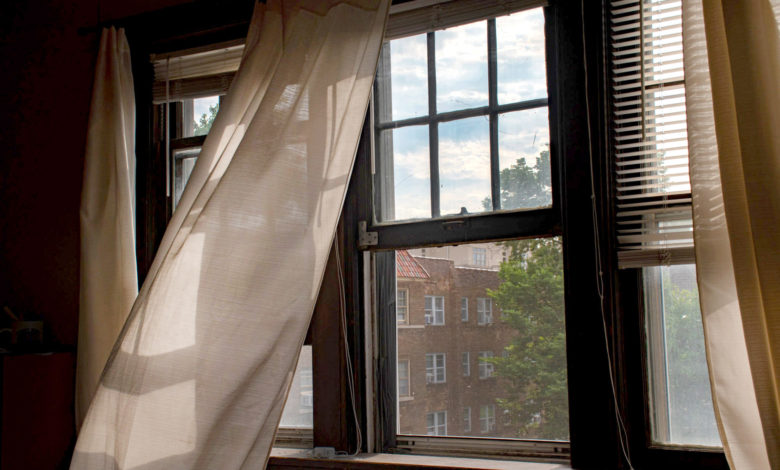Tips to Improve Air Flow Efficiency in Your Home



Improving airflow efficiency in your home can be a great way to cut down on energy costs and enjoy better fresh air circulation. Some tips to get started include:
Checking the duct system for any leaks or cracks
To improve airflow efficiency in your home, checking for air duct leaks and cracks should be top of the priority list. Air duct cleaning services exist to provide a quick diagnosis and resolution of airflow issues. These air quality experts inspect all air ducts to detect any clogs, obstructions, or air gaps that cause air loss and decrease air quality.
Inspections usually involve the use of cameras, visual assessment, and even pressure tests depending on the severity of air loss. Through such thorough evaluations, air duct cleaning services can identify all sources of air leakages and present cost-effective solutions to restore your property’s health and safety measures by regulating proper airflow throughout.
Sealing off entrance points where unwanted air may enter
Making sure that your home is properly sealed off from unwanted air infiltration is the first step towards improving airflow efficiency. Sealing entrances such as windows, doors, and vents helps to keep the air circulating inside a house. All gaps and crevices in the walls, floors, and ceilings should be checked for potential openings and filled with caulk or weather seals to prevent warm or cold air from entering.
In addition, you should also inspect your ductwork to ensure it is free of dirt and debris buildup, which can reduce airflow quality and cause energy loss. With these simple precautionary steps, you can ensure that your home has a steady supply of fresh, clean air that provides enough comfort for you and your family.
Exchanging air conditioner filters regularly
Exchanging air conditioner filters regularly is an excellent way to improve airflow efficiency in your home. Many people don’t realize that if the filter becomes clogged with dirt and dust, it obstructs the airflow, forcing the air conditioner to work harder and use more energy. Replacing the filter on a regular basis ensures that optimal airflow is being achieved and also increases the lifespan of the unit itself.
If you’re not sure how often you should be replacing your filter, refer to the manufacturer’s instructions for specific advice based on your unique equipment. Neglecting this simple task could have negative consequences both in terms of cost and environmental impacts!
Blocking up unused fireplaces
Unused fireplaces create drafts that reduce airflow efficiency in your home and make it difficult to keep your house at a comfortable temperature. Blocking up any existing but unused fireplaces is an easy way to tackle this issue, as long it can be done safely and without violating local building codes or regulations.
Doing this will not only help improve airflow but also prevent cold air from entering the house – keeping you warm and cozy during the winter months. Additionally, blocking up the fireplace helps to maintain a better balance between cooler and warmer areas of the home, leading to lower energy bills over time – something that both you and your wallet can appreciate!
Opening window coverings during the day
One cost-effective way to improve airflow efficiency in your home is by opening window coverings during the day. By taking advantage of natural temperatures outside, you can keep your home warm in the winter and cool in the summer, all without having to increase energy consumption through artificial heating or cooling systems. Additionally, by allowing fresh air in on a regular basis, you can help keep indoor air quality at an optimal level while reducing humidity levels. Using window coverings to naturally heat and cool your home is both economical and practical; it even helps reduce energy bills all year round!
Make sure indoor plants are not blocking airflow sources
Keeping an eye out for any plants that might be blocking air sources from radiators, wall vents, or furnaces as well as any potted plants can help you maximize the airflow in your home. Pruning is essential to avoid plants becoming too large and encroaching into these areas.
Also, make sure they are not planted too close to other objects or walls which could obstruct proper ventilation and air circulation. Being aware of this simple step will aid in keeping a healthy indoor environment by ensuring efficient air exchange.
Consider installing an attic fan
Installing an attic fan is a great way to improve airflow within your home and drastically reduce the temperature of your attic in comparison with outside temperatures. An attic fan helps to reduce heat transfer from the attic to other parts of your house and reduces wasted energy.
Attic fans increase air circulation which can help prevent moisture buildup which leads to mold, mildew, and rot, as well as condensation build-up on windows and walls. They are relatively straightforward to install with easy access through most attics, providing your home with improved airflow efficiency without a large upkeep cost.
Implementing these tips will help you see an immediate improvement in the circulation of air throughout your house.


